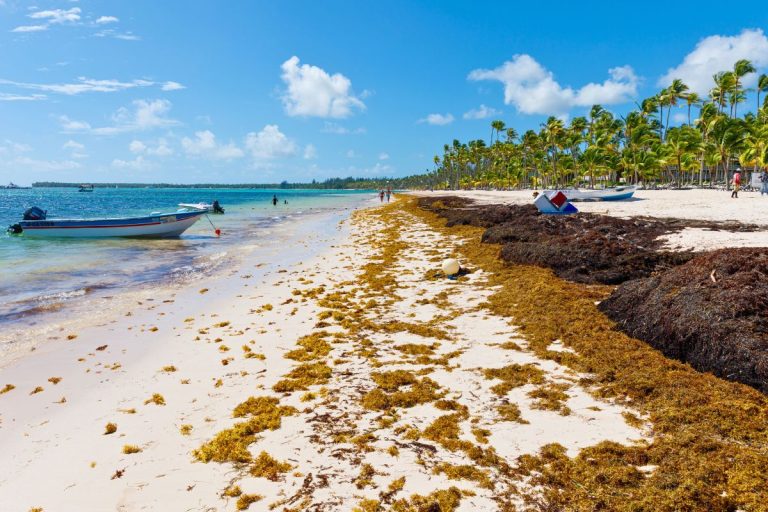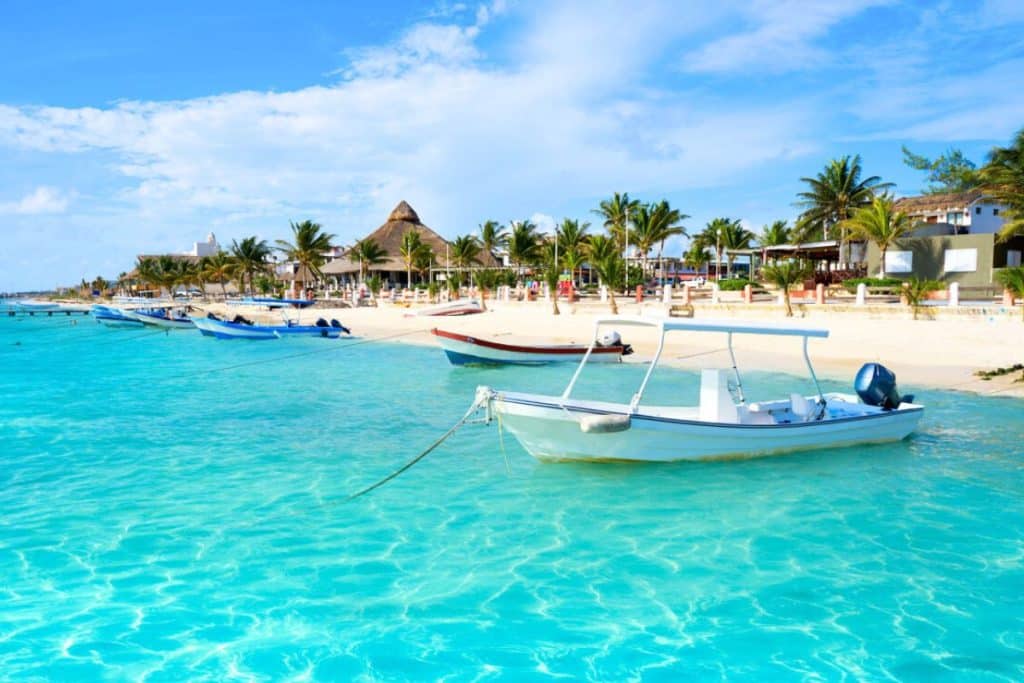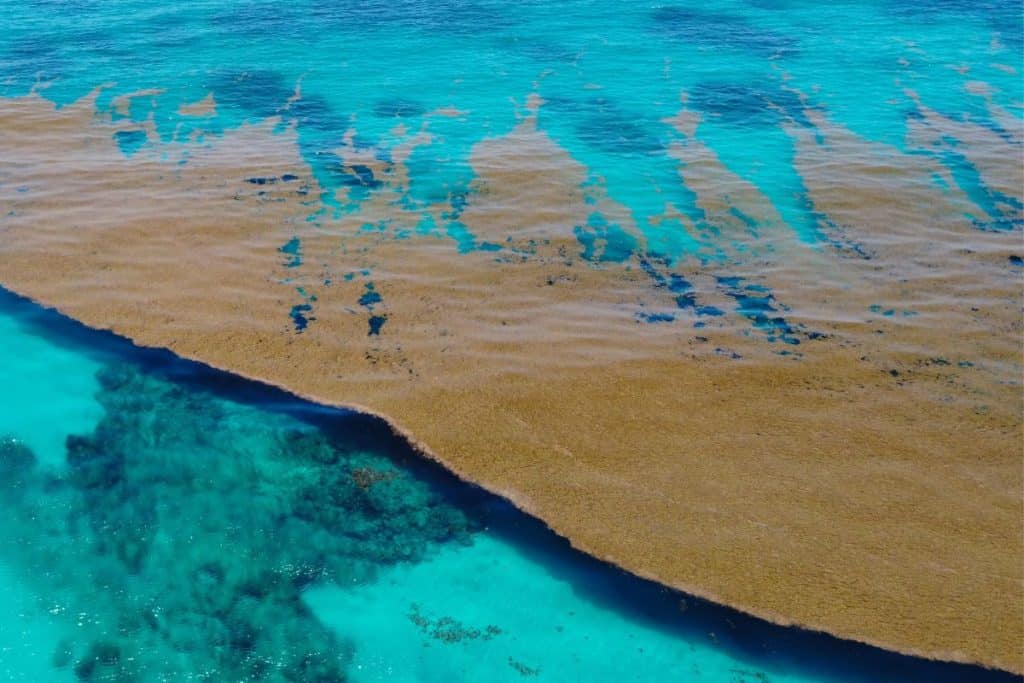One of the drawbacks of visiting the white sand beaches of Cancun and the Mexican Caribbean is that they are subject to having pesky brown seaweed on the shore and in the water.
While not hazardous to swimmers, it can make a beach resort vacation getaway an unpleasant experience.
Now For the Good News
With the peak fall and winter travel season right around the corner, at the top of the mind of many beachgoers in Isla Mujeres, Tulum, Playa del Carmen, and Cancun is what will be the state of the beaches.
According to Esteban Amaro, head of the Sargassum Monitoring Network for the state, the waters of the Mexican Caribbean should be mostly sargassum-free during the upcoming peak fall and winter holiday travel season.
As a result of an El Niño condition, less sargassum made its way to the Mexican Caribbean overall this year.
There were only 22,000 tons of sargassum, or brown seaweed, collected from the beaches of the Mexican Caribbean this year. This was a decline from 54,000 tons last year and 85,000 tons in the record year of 2019.
For tourists to Cancun and other coastal towns in the area, it meant that the beaches and waters were cleaner for swimming.
Virtually Sargassum Free
While there will be the potential for small pockets to arrive on beaches in popular vacation hotspots such as Cancun, Playa del Carmen, and Isla Mujeres, Amaro has predicted that the peak season should be virtually sargassum-free. Usually, seaweed starts appearing at the end of February and peaks in April, May, and June.
He mentioned that the ocean currents are not favorable for the movement of large amounts of sargassum to be deposited on popular tourist beaches.
Typically, sargassum grows in large clusters off the coast of Africa and then is transported by ocean currents to the Caribbean where it finds its way to the beautiful white sand beaches of the Mexican Caribbean.
Along with the shifting ocean currents, high winds and waves from tropical weather systems help to sink the floating sargassum and prevent it from washing up on the shores of Cancun, Isla Mujeres, and Playa del Carmen.
The increased tropical weather activity this year contributed to the sinking of more sargassum than normal so it did not make its way to the tourist beaches around Cancun.
Only a Short-Term Phenomenon
Being a forecaster who deals with the climate and its effect on the sargassum movement in the seas, Amaro points out that this is a low year in sargassum, and it is not the emergence of a new trend for Cancun and the Mexican Caribbean.
In fact, he said it is just the opposite. The Mexican Caribbean ultimately can expect the amount of sargassum washing up on the shores to increase due to the overall warming of the oceans due to climate change.
The warmer oceans promote the growth of sargassum and the shifting currents due to climate change will bring more sargassum to the coastline of Cancun, Isla Mujeres, and Playa del Carmen over time.
Tips For Tourists
Visitors to the Mexican Caribbean concerned about the upcoming peak fall and winter holiday travel season should be happy that the sargassum will not have much impact on their beach resort vacation plans.
The picturesque coastline of Cancun, Isla Mujeres and Playa del Carmen should be looking better than ever, and swimmers can enjoy their ocean experience more without the hassle of the brown seaweed.
So, go ahead, grab that bathing suit and enjoy a dip in the warm tropical waters of the Mexican Caribbean this fall and winter holiday season!



